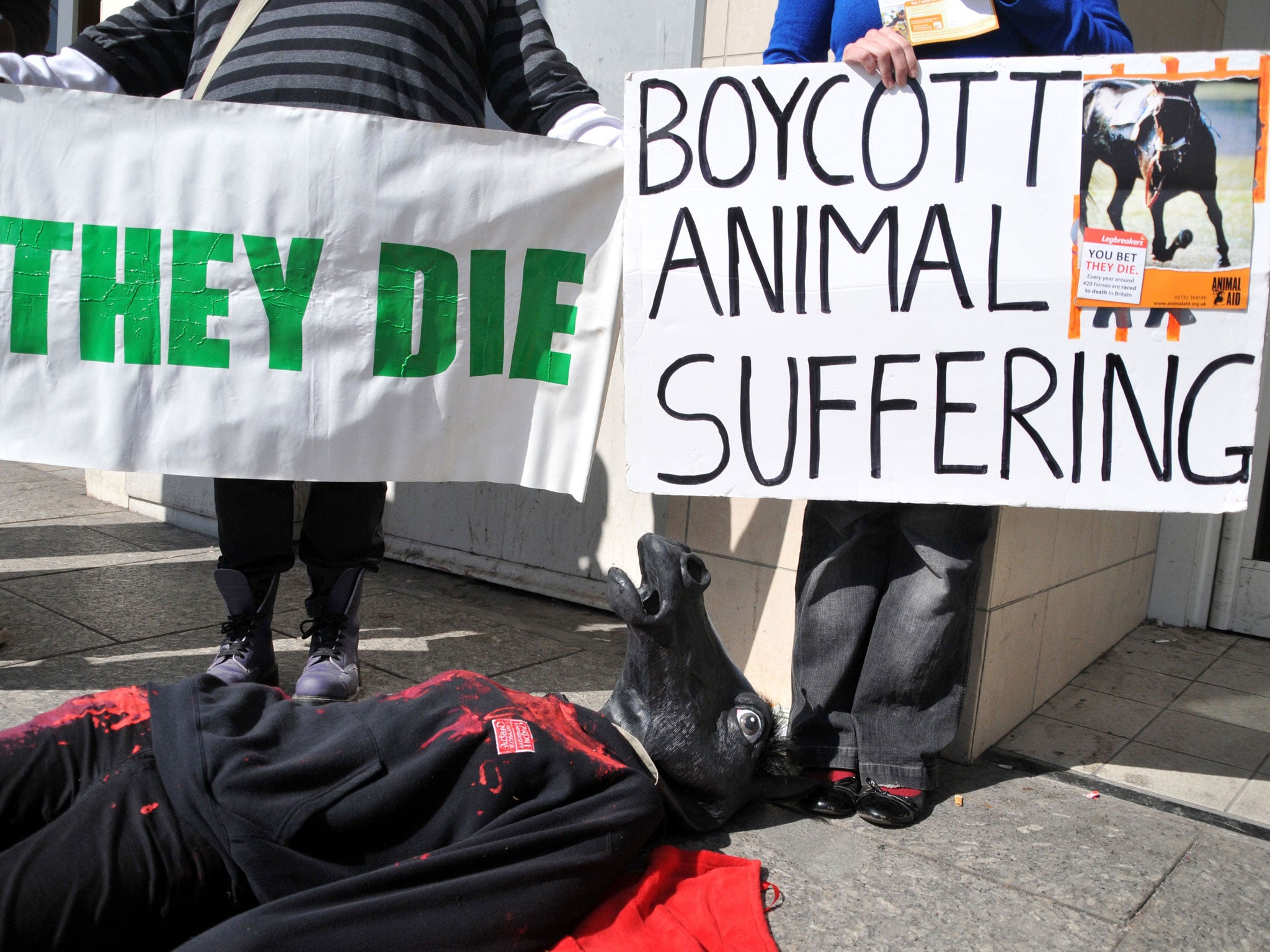The Calvin Report: Race of Death lives to fight another day
Organisers breathe a sigh as Health and Safety wins the 4.15 at Aintree

No news was good news. New life flooded into the Race of Death, and an industry celebrated its sudden mundanity. If the Grand National really is the original extreme sport, as the promo- tional advertisements proclaim, thrill-seekers need seriously to consider the alternative delights of pro-celebrity sewing.
The script for the 166th running of the greatest steeplechase in the world was torn from the pages of a health and safety manual. It was as politically correct as a Fairtrade banana, and as reassuring as a visit from a country curate. Horseracing, and particularly Aintree officials, breathed a sigh of relief which echoed around the world.
The most important 14 words, in the millions tossed like hand grenades between racing aficionados and their opponents this week, was contained in a statement released within minutes of the conveniently romantic victory of Auroras Encore: "Forty horses and jockeys returned safe and sound following the John Smith's Grand National".
The debate about the race's future will, of course, continue. It will still be distorted by vested interests. They are irreconcilable, because they represent different social, cultural, economic and philosophical agendas. But for the moment, the narrative of the event has been softened. Mercifully, there was no need for the much anticipated, widely feared inquest.
The only Mania involved yesterday, on a symbolically spring-like afternoon, was the winning jockey, Ryan Mania, a journeyman whose Aintree debut had a dream-like quality at odds with the harshness of the build-up to a race which could have redefined his sport, instead of reshaping his life.
He will resume his career today in the humble surroundings of Hexham, racing's northern outpost, where horses have been tested since 1720 and races cannot be staged in February because of the harshness of the climate. His mixture of humility and wonder was the story racing craved, given that Katie Walsh failed to deliver a game-changing victory on Seabass.
It was a return to the days of folksy sentimentality instead of anguished self-flagellation. Jim Beaumont, one of the winning owners, worked as a bell boy at Liverpool's Adelphi Hotel before being promoted to the kitchens. Now 78, he was first taken to the National as a five-year-old, by his grandmother.
Aintree traditions involving the 70,000 crowd would need a North Korean missile strike before they were curtailed. The National remains the wedding reception from Hell, a cavalcade of fashion victims robustly drinking themselves senseless in the sun. A great day out for consenting adults.
The stakes were high, and not expressed on the bookmakers' electronic pitches, in the walkways towards the packed stands, which literally shook as horses surged towards the finishing post. The RSPCA had seven inspectors on hand, to seize the moral high ground if required. The guerrilla army of Animal Aid protesters had their sound bites prepared. It was up to the jockeys to respond. They were warned by the British Horseracing Authority, the sport's governing body, that the chaos of previous starts on the National course could not be repeated. Their sport, and by definition their livelihoods, depended on them reining in their competitive instincts.
It was the Grand National, Jim, but not as we knew it. The usual stampede, at 35mph, towards the first fence was as orderly, and anaesthetising as a line dance. There was none of the traditional frantic jostling for position. The crowd yelled anyway. The fences, rebuilt with plastic cores which are designed to be much softer and more forgiving, did their job. The challenge is fairer, but analysis of fatalities in the race since the early years of the 20th century suggest speed, and the added physicality provided by more sophisticated training methods, is the real killer.
Seven horses died in 20 instalments of the race between 1925 and 1949, and 1950 and 1969. There were 12 fatalities between 1970 and 1989. Since 1990, when the course was remodelled after the grisly deaths of two horses at Becher's Brook, there have been 19 fatalities. The decision to shorten the sprint to the first fence by 90 yards was a good one.
Danger challenges the mood of these emotionally constricted times. Another tragedy would have placed racing in real jeopardy, but there will be those who feel the essence of the National has been lost. Further neutralisation of its natural challenges will turn it into a parody of itself.
The race's cultural importance offers little protection; bullfighting was banned in Catalonia when public distaste overcame traditional empathy. It will still take a brave sponsorship director to recommend association with such an unpredictable event.
Racing, a sport that has long since sold its soul to the barrow boys of the gambling industry, has merely had a reprieve. Only two horses fell, and six riders were unseated. The relief of the course director, John Baker, was palpable. He spoke in numerical terms; £1 million invested in improvements, 150,000 spectators over three days and 600 million viewers worldwide.
But only one thing mattered. Death had no dominion.
Subscribe to Independent Premium to bookmark this article
Want to bookmark your favourite articles and stories to read or reference later? Start your Independent Premium subscription today.

Join our commenting forum
Join thought-provoking conversations, follow other Independent readers and see their replies